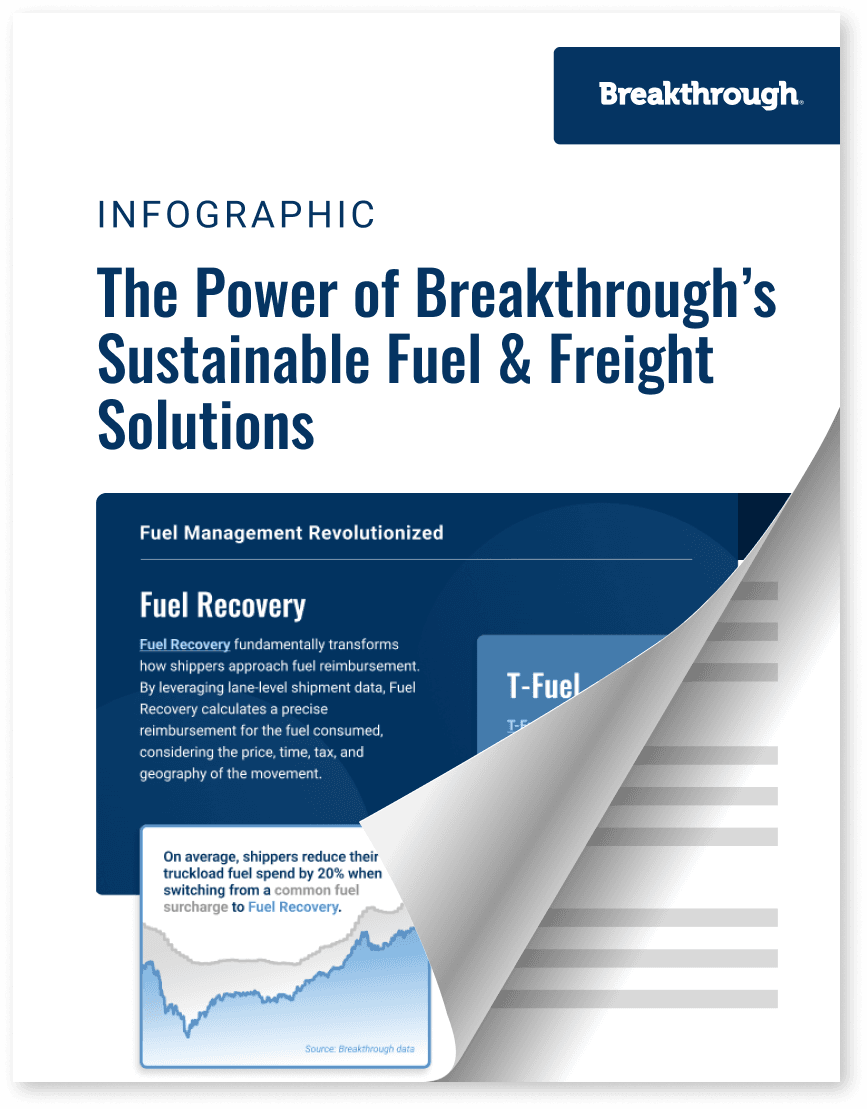The Power of Breakthrough's Sustainable Fuel and Freight Solutions

Freight
3 min read
July 17, 2024
Market Events
4 min read
July 16, 2024
Market Events
3 min read
July 8, 2024

5 min read
August 9, 2018

Share:
As a shipper, opening up your transportation network to a new round of carrier bidding can be stressful. The entire process of updating internal requirements, forecasting for future demand, putting your lanes out to RFP, and waiting for carrier responses is full of uncertainty. Even when proposals come back, it’s often hard to determine whether they will bring the right value to your organization and meet strategic goals.
It’s no surprise that in Inbound Logistics’ 2017 annual survey, reducing transportation costs, increased price pressures from customers and competition, and improving customer service were top shipper concerns. In all of the above, the strategies you set as an organization have the potential to drive real change, but without the right data, determining whether goals were met year over year is difficult.
Savvy shippers stay abreast of changes and trends in the industry, monitoring advancements in transportation management, reading industry trade journals, and navigating supply chain management challenges. Being aware of macro trends like rising diesel prices and linehaul rates ensures your supply chain never misses a beat in the marketplace. Furthermore, an understanding of the underlying drivers of these trends will empower you to succeed in a dynamic marketplace.
To understand RFP results, you must first understand what influences each component. The carrier bids from your latest round of RFPs might be higher than years past, but how do they compare with your industry peers’? If rates are higher, is this due to fluctuating capacity and market dynamics, or due to a competitive advantage for the carrier? Ultimately, what are the underlying dynamics that drive outcomes in terms of freight rates, service levels, and other key performance metrics? These are the questions that shippers struggle to answer, because of a lack of clear information.
Even shippers who work with procurement consultants to send their network out for RFPs are often frustrated with the paucity of comparative data available to aid in decision making. This problem has been on Breakthrough’s radar for some time, and we’re using our base of millions of freight movements each year to help our clients understand how their strategies will bring them success in the freight marketplace. What strategies are working well? Which are struggling? What are the consequences of each strategic procurement decision on the next?
For years, we’ve heard from our clients that the network bidding process is opaque, and that the lack of information can make you feel like you’re flying blind. Over the years, Breakthrough clients often expressed the desire to receive the same level of detail that we provide for real-time fuel pricing in the carrier RFP process. That’s why we created our Breakthrough Supply Chain solution, which brings a robust, accurate, cross-section of industry data and experience to bear on the procurement strategy development process.
In addition to providing industry insights, benchmarking, and a more complete look at freight market activity than any one logistics provider, Breakthrough is now poised to offer a suite of supply chain services to help shippers develop, execute, and monitor the most effective supply chain strategy for their network. With the breadth of clients that we serve, and the carriers associated with their networks, we have access to arguably the most robust, accurate, and dynamic transportation dataset across the industry.
This access to exclusive data augments your existing bidding process to create visibility into:
Breakthrough has a unique vantage point where we have access to and deep relationships with the largest supply chains in the world. With Breakthrough Supply Chain, we leverage our extensive data and collective experience to help our clients create the most effective strategy for their freight procurement strategy and ongoing compliance.
This access to critical benchmarking data is what makes our solution so unique. Some software tools claim to have peer information, but none benefit from the breadth of market intelligence we offer. We are the only service on the market that focuses on components that drive cost, understanding the operational implications of strategic decisions, and how cost and service interact with each other in ways that fuel strategic decisions—all based on actual data from shippers in the marketplace. There can be a dizzying array of decisions to be made regarding your RFP; make them with the confidence that you are backed by the right data.
Learn more about how we can help create transparency and visibility in your next network bid process by contacting us to schedule a consultation.

3 min read
July 17, 2024
Maximize transportation efficiency with cohesive fuel and freight strategies. Discover the power of enhanced visibility, cost-effectiveness, and sustainability.
Read more
4 min read
July 16, 2024
Discover how the recent elections in Mexico and the EU are expected to influence energy policies, fuel prices, and dynamics in the transportation sector.
Read more
3 min read
July 8, 2024
Understand the state-specific changes in diesel tax rates and explore strategic solutions for shippers to accurately calculate fuel reimbursements to carriers.
Read more